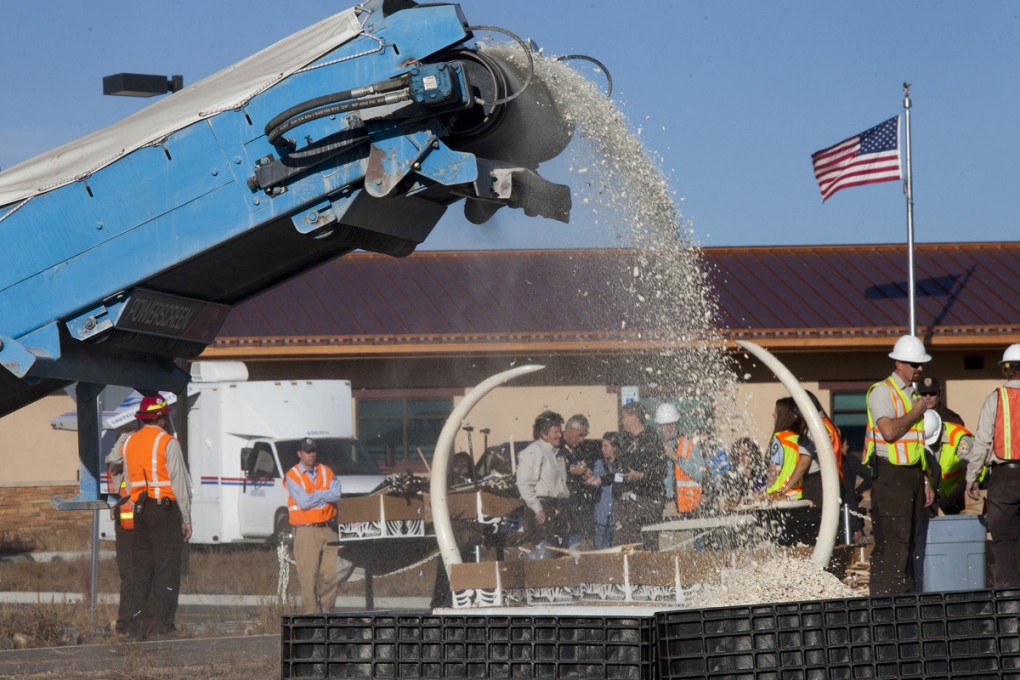Crush course: How Hong Kong's schoolchildren are pushing for seized ivory destruction
Taking their cue from the US and the Philippines, Hong Kong schoolchildren are leading the drive to destroy the city’s enormous stockpile of seized ivory and send a message to poachers, dealers and consumers, writes Alex Hofford

Thick clouds of fine, choking white dust fill the winter afternoon air as a giant rockcrushing machine rumbles on. Coughing and spluttering, I struggle to hold my gaze as the spectacle is lost behind swirling clouds.
A cascade of crushed ivory is spewed out by a giant blue machine used more often to crush stones to mix with bitumen than grind up parts of an endangered species from another continent.
Surrounded by conservationists and journalists looking on in deafened awe, wildlife officials in hard hats and highvisibility vests load an excavator with large pieces from a giant pile of elephant tusks and with carved ivory statuettes, trinkets and jewellery. The excavator shuttles back and forth, from tusk pile to rock crusher, feeding the metallic beast as it feasts upon what remains of countless herds of elephants.
This was the scene Hong Kong schoolgirls Lucy Skrine, 11, and Christina Seigrist, eight, hoped to witness in their hometown when they started a petition (bit.ly/BanHKIvoryTrade) through online activist network Avaaz in September to have the city’s stockpile of more than 33 tonnes of confiscated ivory destroyed. It was the scenario they wanted to achieve with the 10,000 signatures they asked for.
But this is not Hong Kong. The rock crusher is at work in Denver, Colorado, where it is crushing the United States government’s six-tonne stockpile of ivory seized from tourists and smugglers at the country’s land borders and airports since the 1980s.
Wildlife officials say it is hard to estimate exactly, but they believe the total being crushed here amounts to the tusks of between 1,000 and 2,000 elephants – a fraction of the number of dead animals represented by Hong Kong’s stockpile.